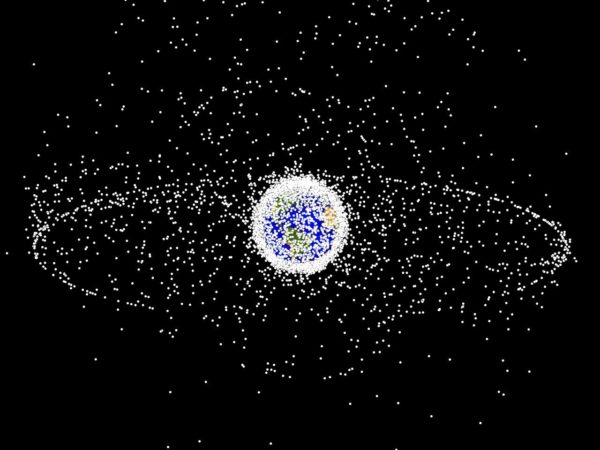
 The Japan Aerospace Exploration Agency (JAXA) is about to try out a fancy new gadget of its own invention, an electrodynamic tether (EDT) that will attempt to pull small objects -trash, to be precise- out of orbit from around the Earth, thereby serving as the world’s newest space garbage collector.
The Japan Aerospace Exploration Agency (JAXA) is about to try out a fancy new gadget of its own invention, an electrodynamic tether (EDT) that will attempt to pull small objects -trash, to be precise- out of orbit from around the Earth, thereby serving as the world’s newest space garbage collector.
“To preserve the outer space environment for future generations, it is necessary to remove existing large pieces of space debris that can generate numerous debris by mutual collisions,” says JAXA in a press release. “Electrodynamic tether (EDT), an advanced high-efficiency propulsion system, is a promising candidate to de-orbit the debris objects at low cost.”
Spent rocket stages, broken (or intentionally exploded) satellites, frozen globs of water and even flecks of paint are all reportedly up there in Low Earth orbit, travelling at the rapid speed of seven kilometres per second.
How much space debris are we talking about? By current estimates, there are 21,000 objects bigger than ten centimetres, half a million objects between one and ten centimetres and literally millions of tiny bits under one centimetre in length. That’s a lot of junk, enough to be a hazard for space travel – space agencies are forced to chart the orbits of the bigger pieces so that, like a squirrel running into traffic, spacecraft can be launched at the right time to avoid getting hit.
The new trash collector will be tried out early in 2017 when the Kounotori 6 resupply vehicle, which just recently arrived at the International Space Station, will be undocked from the ISS and directed back down towards Earth. But as it falls (and before it gets burnt up in the atmosphere) the K6 will deploy a 700 metre cable made of aluminum strands and steel wire, with a 20 pound weight on the end and fed with an electric current.
Its creators hope that the Kounotori Integrated Tether Experiment (or KITE) will generate enough electromagnetic energy as it travels through the Earth’s magnetic field to affect the orbital paths of any nearby floating debris. Literally sweeping across the sky, KITE will hopefully provide just enough of a nudge to send some of the space trash earthwards, where it, too, will burn up in the atmosphere.
JAXA’s scientists hope that the results from KITE will inform future projects on space junk removal.
“KITE will help us identify the features and key technologies necessary to design and develop an EDT system as a method for improving space safety by removing large debris,” says the space agency.
The K6 supply ship arrived to the International Space Station on December 13 with 2,565 kilos of equipment, food, water and six new batteries for the station’s solar power system. The unmanned ship was successfully snatched out of (very) thin air by the ISS’s Canadarm2 robotic arm as it and the ISS orbited the Earth about 400 km straight above southern Chile.
The arrival was cause for celebration on board the space station, as Expedition 50 commander Shane Kimbrough stated, “We were talking last night and thought it was really cool … when you have a NASA astronaut and a European Space Agency astronaut using the Canadian robotic arm grabbing a Japanese vehicle and attaching it to the U.S. side of the space station. That’s pretty cool.”
A product of the Canadian Space Agency, the Canadarm2 is a 17 metre robotic arm that first served to assemble the ISS itself while orbiting in space and is currently used to move about equipment and latch onto spacecraft such as the K6.
Leave a Reply
You must be logged in to post a comment.




 Share
Share Tweet
Tweet Share
Share




Comment